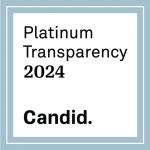People often ask NOVA volunteers why Haiti?
Here are some of the sobering Haitian statistics that lead our founders to choose Haiti back in 2002:
- The poorest nation in the Western Hemisphere
- Long history of political instability
- National governmental support is scarce at best
- Only 50% of the population has health care access (Much less outside Port-au-Prince)
- Infant (< 5 yrs. Old) mortality 127/1000 (USA: 6/1000; Spain, France, Germany, Italy: 4/1000; Cuba: 6/1,000)
- Life expectancy 59.5 years
- The probability at birth of not surviving to age 40 is 21.4%
- Tetanus immunization is only 12% in pregnancy
- Only 28% of the population has safe water access
- Undernourished population: 46%
- Population living below $2 per day is 78%
- Literacy only 41% of population
- Public expenditures on health: 2.9% of GDP (USA: 6.9%, Cuba 5.5%)
About Haiti
Haitian Culture and History
Haiti shares the Caribbean island of Hispaniola with the Dominican Republic. A former French colony, Haiti became the first independent black republic, and the only nation in history to arise from a successful slave revolt. Haiti also became the second self-determining nation in the Americas when it declared its independence on January 1, 1804. Because of its French and African heritage, nearly all Haitians speak Kreyòl Ayisyen (Haitian Creole), a language based on French and African dialects, with Taíno and Spanish influences. French is the official language.
Haiti has had a turbulent history with political instability, fiscal challenges, and numerous coups d’états. Over the years this has resulted in the loss of an industrial base. As a result, basic staples, including sugar and rice that, at one time had been cultivated locally, must be imported. Haiti’s deteriorated infrastructure has resulted in unemployment rates greater than 2/3 of the work force and minimal governmental services. Even potable running water and electricity are rare.
Haiti’s Economy
Haiti is the poorest country in the Western Hemisphere. Fifty nine percent (59%) of the population lives in abject poverty. Two-thirds of all Haitians work in agriculture. Available agricultural methods are archaic and crops are vulnerable to damage from frequent natural disasters. Haiti’s widespread deforestation further threatens agricultural output. An effective industrial base does not exist there, resulting in pervasive unemployment and increasing crime and violence.
Quality of Life
According to United Nation’s 2017 Human Development Report, Haiti’s quality of life is very low on the list, ranking 168th place in the world populations. In fact, it has the lowest rank in the Western Hemisphere with only the sub-Saharan African countries ranking lower. Reported life expectancy at birth is 63 years of age. Haiti ranks as the most malnourished country in the world currently. The prevalence of malnourishment is 48% of the general population and contributes to the startling and dismaying life expectancy figures. Purified water is not available to 56% of Haitians and 76% of the population lives on less than $2.00 (US) per day!
Health Issues in Haiti
Many severe health challenges face Haitians. Infectious diseases, such as Typhoid, Malaria, Hepatitis B and C, Parasitosis, Dengue fever, Cholera, Tuberculosis and HIV/AIDS are widespread. The malnutrition rate of 48% increases susceptibility to tropical diseases. Death often ensues from illnesses that are easily curable, such as infectious gastroenteritis, which causes uncontrolled diarrhea in children.
How to Help Haiti
Please help us keep NOVA Hope for Haiti’s mission alive. DONATE TO HAITI TODAY to help us to continue to provide medical care to the people of Haiti. Thank you


